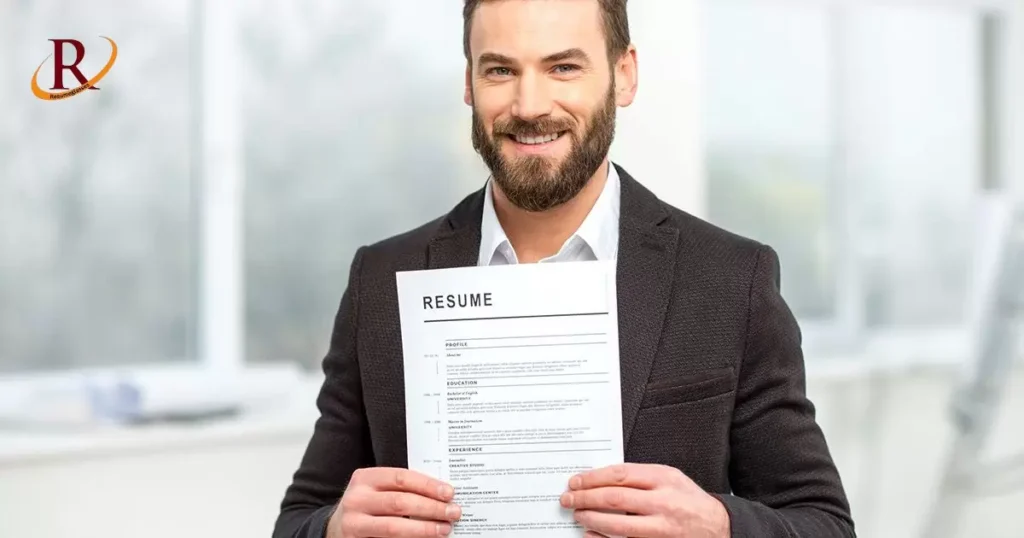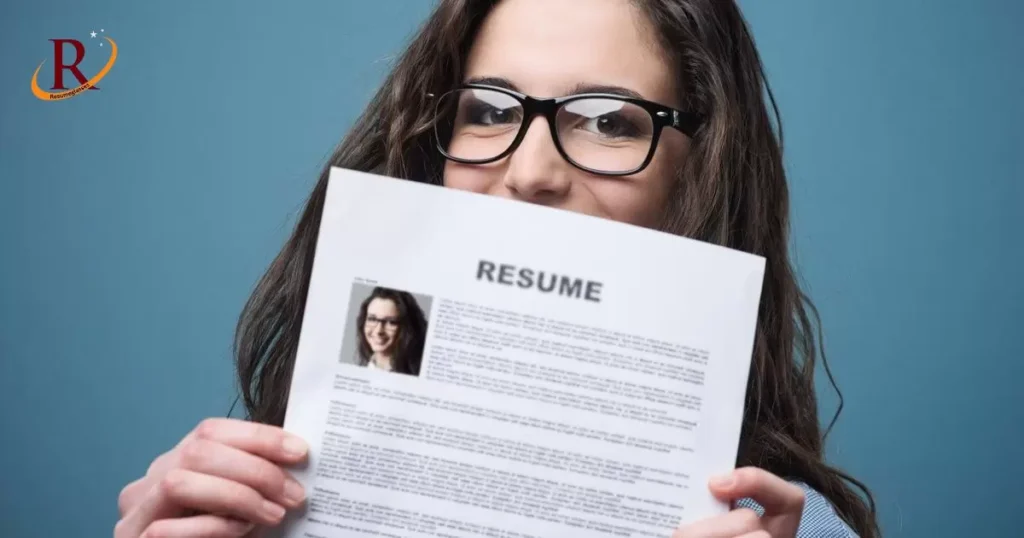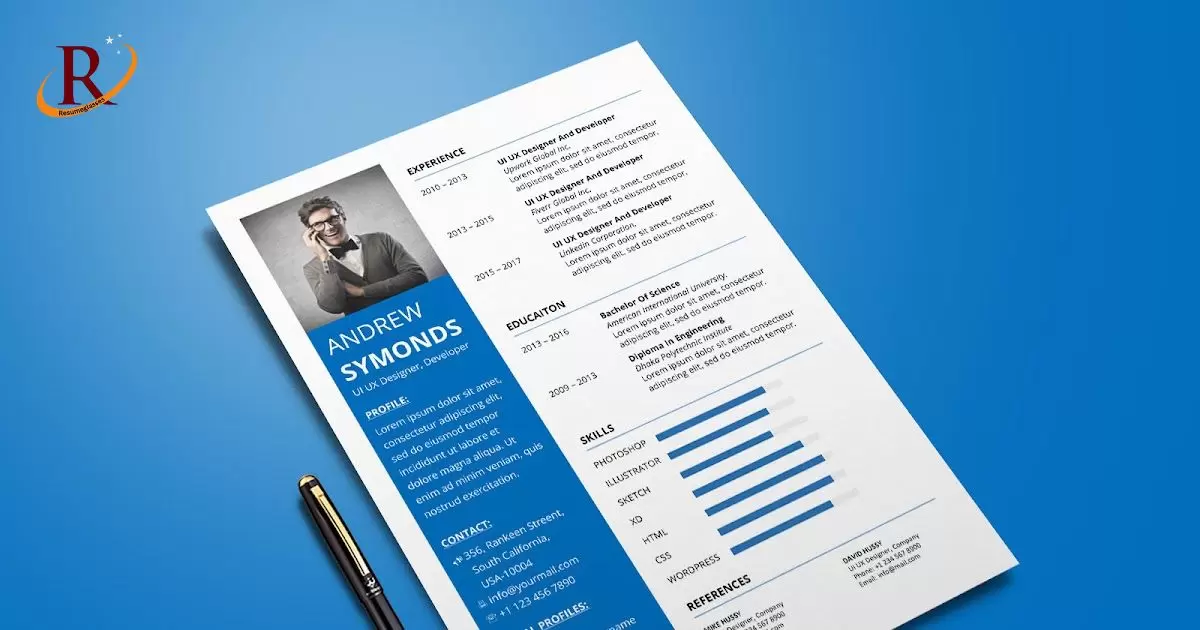A double-sided resume means putting your details on both sides of a single paper when creating your job application document. People think about this when they have lots to share about their work and skills. But, in today’s digital world, and to keep things simple, it’s often better to focus on making a clear and concise one-sided resume.
Ever thought about making your resume a two-sided story? The question lingers: Can resumes be double-sided? In the world of job hunting, this puzzle sparks interest and discussions. Stick around as we explore the ins and outs of the double-sided resume, helping you figure out the best way to share your professional journey.
It depends on your situation. If you’re early in your career or aiming for entry-level positions, stick to a one-page resume. However, a two-pager is okay if you’ve got more professional mileage. Remember, if you go for two pages, opt for single-sided printing for a clean and easy-to-read presentation. Tailor your resume length to showcase your strengths without overwhelming your potential employer.
Pros and Cons of a Double-Sided Resume

Pros
- Optimal Use of Space: Using both sides of the paper efficiently, a double-sided resume helps fit more information without looking cluttered.
- Highlighting All Skills: Good for those with many skills, it allows you to showcase a range of abilities, ensuring none get left out.
- Pick and Choose Information: You can be selective, including only the most essential details for a particular job, making your resume more targeted.
- Better Organization: With two sides, you can organize your information logically, guiding the reader through your experiences transparently.
- Go Deep into Projects: If you’ve worked on various projects, a double-sided resume lets you describe them in detail, giving a fuller picture of your capabilities.
- Helpful for Mid-Career: It benefits those in the middle of their careers, allowing them to present a comprehensive view of their professional journey.
- Flexible for Different Levels: While one page is standard, a double-sided approach is flexible, accommodating executives and seniors who might have more extensive career stories without sacrificing readability.
Cons
- Risk of Too Much Info: A double-sided resume might give too much information, making it easy for employers to miss essential details.
- Printing and Handling Issues: Some employers may prefer to avoid or find it easy to handle double-sided resumes, especially when electronic submissions are expected.
- Chance of Repeating Info: Job seekers might unintentionally repeat information on both sides, defeating the purpose of a concise resume.
- Reader Tiredness: Longer resumes can tire readers, making it hard for employers to focus on the content.
- Formatting Challenges: Making a double-sided resume visually appealing and easy to read requires careful formatting, which can be time-consuming and prone to errors.
- Preference for One Page: Many employers prefer a short, one-page resume, and a double-sided one might be seen as breaking this rule.
- Risk of Misunderstanding: More pages could lead to misunderstandings, with employers thinking the candidate must follow the usual one-page guideline.
Your resume must not exceed one page (unless it needs to!)

Creating an effective resume is like finding the right balance. Your resume should stick to one page unless there’s a good reason to go beyond that. Keeping it to one page is the way to go if you’re a regular college student or someone just stepping into the job world. Even folks in the middle of their careers can fit everything on one page.
But, and here’s the thing, there are some exceptions. Professors and researchers may need more space for a Curriculum Vitae that could go up to 50 pages. High-level professionals might stretch it to two or four pages. Your resume is like your introduction to a potential employer, and it’s got to be just suitable for the situation. However, treat the one-page rule as something other than an unbreakable law. It’s more like a friendly guide.
Your resume is a quick preview of what you bring – your education, work history, skills, and more. The real trick is to make it complete but not too long. Before deciding on the length:
- Think about each piece of info.
- Ask yourself, “Why do they need to know this about me?” If you can’t find a good reason, maybe it’s better left out.
- Keep it tailored to the employer’s needs, and you’ll have a resume that’s easy to read and makes a strong impression.
Your resume is a marketing document, not an informational document
Your resume isn’t a data dump; it’s more like a marketing pitch. It’s not meant to spill every detail about your life. Instead, it’s an executive summary, a quick look at your best qualifications. Too much unnecessary info can be a roadblock for employers. They’re looking for what makes you stand out, not your life story. So, before adding anything, ask yourself, Does this help the employer see why I’m the right fit? If not, it might be better left out.
Think about it from the employer’s side. They’ve got heaps of resumes to go through. Make yours a quick read by focusing on what matters most. Your resume is your ad, not an autobiography. Keep it snappy, relevant, and aimed at the job you’re gunning for. That way, it’s more likely to catch the eye of the person doing the hiring.
Don’t let the format of your resume get in the way of the content
When contemplating the formatting of your resume, it’s crucial to strike a balance that showcases your content effectively. The question, Can resumes be double-sided? Often arises, and while it may seem like a practical choice for accommodating extensive experiences, it’s vital to keep this decision from overshadowing the core content. A double-sided resume may offer more space, but its impact hinges on how well it presents your professional story without overwhelming the reader.
In crafting your resume, the emphasis should always be on the substance of your experiences. For instance, if you’ve had unique work experiences such as Working At Hooters, focus on articulating the skills gained and responsibilities handled rather than letting any potential biases associated with the workplace detract from the overall narrative.
By letting the content shine through, you ensure that your resume provides a comprehensive overview of your professional journey and dispels any distractions that might arise from preconceived notions.
If you have a two-page resume, don’t print it double-sided
- Consider Digital Submission: In the digital era, electronic submissions are standard, making the need for double-sided printing irrelevant.
- Quality Printing Matters: If a hard copy is necessary, choose quality paper for a professional presentation.
- Print Each Page Separately: Opt for single-sided printing to maintain control over the appearance of individual resume pages.
- Focus on Polished Presentation: Printing each page separately ensures a polished and neat overall document.
- Keep it Clear: Avoiding double-sided printing enhances clarity, making it easier for the reader to navigate through your resume.
- Highlight Individual Impact: Each page can effectively emphasize the impact of your qualifications.
- Ensure Maximum Impact: Single-sided printing allows you to maximize the impact of your resume by presenting each page distinctly.
How to trim your resume
| Trimming Techniques | Description |
| Remove Irrelevant Details | Eliminate information not directly related to the job. |
| Focus on Achievements | Prioritize impactful accomplishments over daily tasks. |
| Quantify Your Contributions | Use quantifiable metrics to highlight the scale of your achievements. |
| Condense Bulleted Points | Streamline descriptions, keeping them concise and to the point. |
| Tailor Content to the Role | Customize your resume for each job application, emphasizing relevant skills. |
| Delete Outdated Experiences | Remove roles or skills that are no longer applicable or significant. |
| Merge Similar Responsibilities | Combine similar job responsibilities to avoid redundancy. |
What information should you include in your resume?

Crafting an effective resume involves a thoughtful selection of information that showcases your qualifications. Your resume should provide a snapshot of your skills, experiences, and achievements relevant to the job you’re applying for. Here’s a breakdown of the critical sections and what each should encompass:
Contact Information
Ensure your resume starts with your full name, phone number, email address, and, if applicable, your LinkedIn profile. This section should be clear and easily accessible.
Objective or Summary (Optional)
A brief statement summarizing your career goals and what you bring can be included, but it’s optional. Keep it concise and tailored to the specific job.
Education
List your educational background, including the institution’s name, degree obtained, graduation date, and any honors or relevant coursework.
Work Experience
Detail your work history in reverse chronological order. For each position, mention the job title, the company’s name, dates of employment, and key responsibilities and achievements.
Skills
Highlight both hard and soft skills relevant to the job. Use bullet points for easy readability.
Achievements or Projects (Optional)
Include notable achievements or projects to provide concrete examples of your capabilities. This section can bolster your qualifications.
References (Optional)
Indicate that references are available upon request. Including names and contact information is not necessary at this stage.
Tips to Avoid Negative Impressions

- Clear and Concise Language: Use straightforward and concise language to convey your ideas without unnecessary complexity.
- Avoiding Grammar Mistakes: Proofread your content to eliminate grammatical errors and ensure a professional presentation.
- Professional Tone: Maintain a professional and respectful tone in all written and verbal communications.
- Timely Responses: Respond promptly to emails and messages to demonstrate reliability and a proactive attitude.
- Mindful Social Media Presence: Be cautious about what you share on social media platforms, ensuring your online presence aligns with a professional image.
- Respectful Communication: Approach discussions respectfully, even in disagreement, to foster a positive and constructive environment.
- Attention to Detail: Please pay attention to the details in your work, whether it’s an email, report, or presentation, to showcase diligence and accuracy.
Frequently Asked Questions
Can Resume Be On Both Sides Of A Paper?
Yes, a resume can be on both sides of a paper, but keeping it to one side is often recommended for easy readability.
Is It Unprofessional To Have A 2 Page Resume?
Having a two-page resume is not inherently unprofessional. It depends on your experience and the relevance of the content to the job.
Are Two Page Printed Resumes Generally?
Two-page printed resumes are standard, especially for individuals with extensive work experience or varied qualifications.
Should A 2 Page Resume Be Stapled?
Stapling a two-page resume is a good practice to keep the pages together and maintain a professional appearance.
Final Thoughts
In concluding our discussion on whether can resumes be double-sided, we find that a double-sided format might seem tempting, especially for those with abundant experiences, readability is paramount. Striking the proper equilibrium ensures a professional presentation that effectively captures the essence of your qualifications. Quality takes precedence over quantity in the realm of crafting impactful resumes.
In the world of resume design, simplicity holds sway over complexity. Unless necessary, restricting your resume to one side guarantees a clear and straightforward presentation of your skills. Even though a double-sided resume is fitting for those with extensive work histories, the challenge lies in avoiding repetition and keeping the reader engaged. As you navigate the intricacies of resume creation, remember that the aim is to stand out without overwhelming the reader with unnecessary details.
Consider industry expectations, your experience level, and the specific demands of each job application. As you fine-tune your resume for maximum impact, remember that your content’s substance and relevance shape a lasting impression.

Author Marcus Wilde, with 8 years’ experience, shapes resumeglasses.com with literary prowess, offering impactful content for enhanced resumes and career growth.











